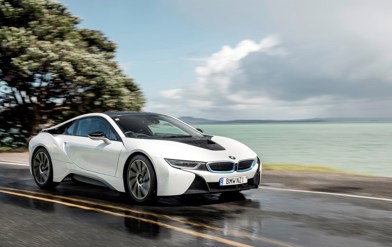The first time I saw my father cry was when I was 3 or 4. Mum cradling me in her arms, Dad teary eyed, and his fourth-gen Toyota Hilux pulling out of our driveway for the final time — a happy new owner behind the wheel.
Forget the Holden Commodore, Ford Falcon, and faithful Corolla; the Hilux is the closest thing New Zealand has to a national car.
They’re an irrefutable part of our cultural fabric, whether it’s Barry Crump bouncing through the woods, Sir Peter Blake riding down Queen St with the America’s Cup, or a dog submerged in mud saying “bugger”.
Only, nowadays the Hilux isn’t really the top dog. For the past 12 months or so, it’s been engaged in sales war with the Ford Ranger.

Some have accused the brand of being a bit complacent in the case of its hard-working Hilux. And that’s a worry in this current climate, with more competition from the usual suspects (Nissan, Mitsubishi, Holden) and the new-age pretenders (LDV, SsangYong, Foton) than before.
And it could be said that pricing reflects this. Four-wheel drive double-cab Hiluxes begin at $43,990 — 10 grand more than a better-equipped base LDV or Foton. This Olympia Red Hilux tester is an upper-spec SR5, priced at $50,990 as tested.
Under the bonnet is a 2.8-litre turbo-diesel with 130kW of power and 420Nm of torque, capable of towing a braked 3.5-tonnes in this SR5 configuration.
A rare road-testing delight for the Driven office was the presence of a manual transmission. We don’t get many of these any more, given the local popularity of automatics, CVTs, and DSGs. A word of warning though; the automatic gets 30Nm more torque.

In the Hilux it’s surprisingly snickety, with each shift feeling assured to hand. It pairs well with that engine, too, offering middling, yet competent performance off the line and improved refinement. In particular, the Hilux is extremely quiet sitting between 2500rpm and 3000rpm, which is where you’ll spend most of your time in urban and motorway commuting.
But the rest of the daily experience is a mixed one. Ride quality lacks, thanks to the rigid leaf spring suspension set-up in the rear. Steering is workmanlike — light and responsive enough to place it firmly in the middle of the segment, but cumbersome while parking up.
Ride quality improves greatly when the tray (capable of lugging more than 900kg) is loaded up with weight, but a cynic would be quick to point out how many of these things see that kind of hard work in daily use.
More “school run” than “paddock bash”, and a Ranger would perform this task with far less resulting spinal damage.

Inside, it’s what you’d expect to see from Toyota. Design is busy and premium at first glance, but constructed out of hard, utilitarian plastics. This SR5 comes with keyless go, leather trim, climate control, and satellite navigation in its 7-inch infotainment screen.
It’s comfortable, and rear passengers get improved leg and foot room. But the lack of Android Auto and Apple CarPlay, as well as the lack of intuitive physical buttons for that central tech hub, will grate with some buyers. Sticklers for safety tech get brake assist, EBD, reverse camera, and trailer sway control — but miss out on adaptive cruise control, lane-keep assist, and blind-spot monitoring.
Then there’s the looks.

Beauty is in the eye of the beholder, of course, but you’ll struggle to find many keen to defend the Hilux’s appearance. Bulging guards on each corner give it a muscular stance, and social peacocks will appreciate the chrome and LED day-time running lights. But the pinched nose and soft jaw-line undo much of the hard work.
That said, Toyota has clearly listened. Its new range-topping SR5 Cruiser brings in a much more agreeable face, while the angry, all-in Gladiator looks ready to beat you up behind the bike sheds.
There’s one good thing about the Hilux nose. The upswept front bumper helps minimise front overhang, helping it achieve an approach angle of 31 degrees.
That all probably reads like utter gobbledygook for urbanite readers, but it points to the area in which the Hilux can truly redeem itself; off-road.

In its week with me, the SR5 spent most of its time tackling the mundane drudgery of Auckland life; stop-start traffic, concrete canyon city driving, and the avoidance of anyone in activewear.
But, we did get to navigate a few gravel roads and beaches together. And here the Hilux was in its element.
All four-claw Hiluxes come with a part-time four-wheel drive system that can be switched between RWD and 4WD on the fly. Four low is there for the properly tough stuff, too.
And even on mild gravel, the differences are clear. In two-wheel drive it’s fine, but when slotted into four high it grows new confidence and rides bumps with much more assurance. Toyota also says that protection underneath has been beefed up, which just serves as added incentive to test its capabilities.

At the end of the day, there are better utes out there in almost all the big categories. But the Hilux still stands up as a safe go-to option for those who value hard-working traits and off-road chops.
And if you don’t rate those elements, well ... you’ll probably buy one anyway. The numbers don’t lie.
2018 Toyota Hilux SR5 4WD
Price: $50,990 (manual), $53,490 (automatic)
Pros: As capable and versatile as ever, reputation, resale value, easy to drive
Cons: Could be better optioned, not particularly attractive or comfortable





















